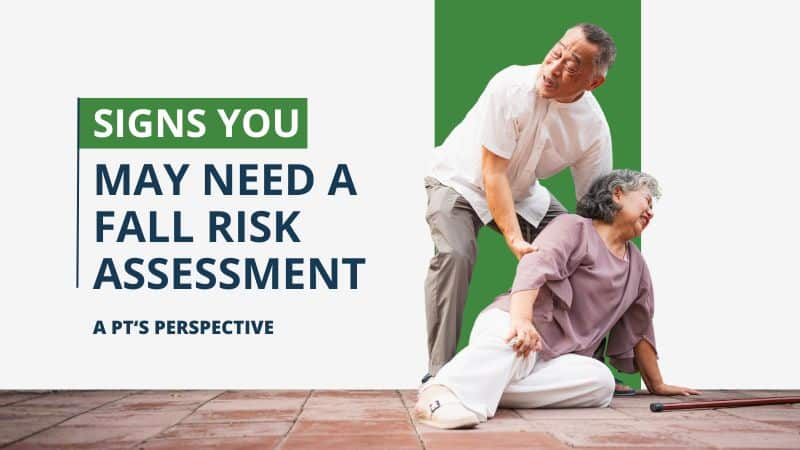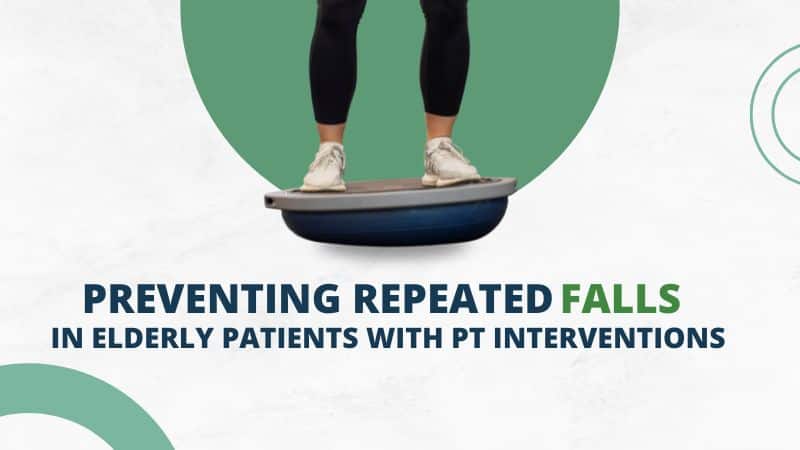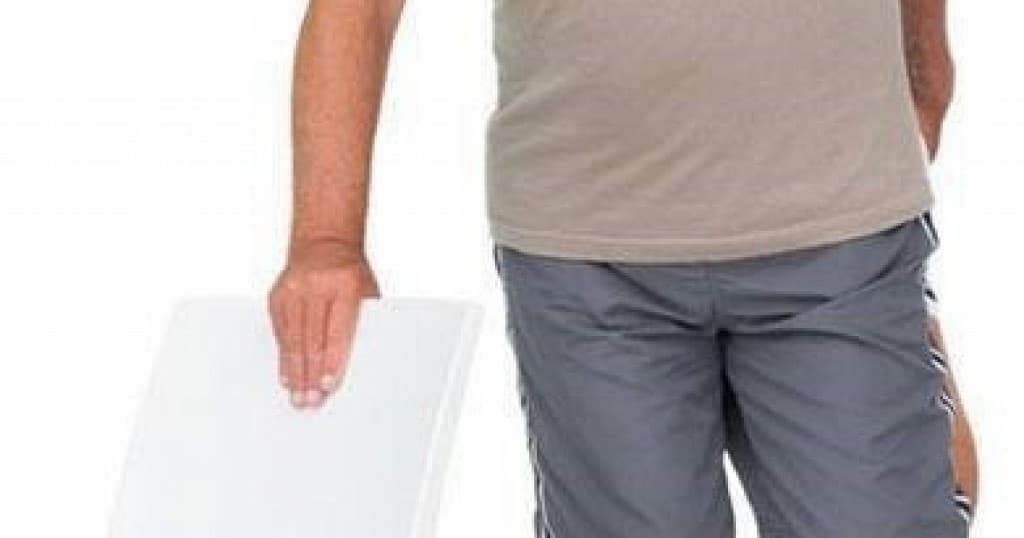Falls don’t just “happen with age.” They often come after small but noticeable changes in strength, balance, or mobility. In fact, physical therapists like Robin Evans, Director of Ivy Rehab’s Geriatric & Vestibular Specialty Program, point out that many falls are preceded by subtle gait changes: shorter steps, slower turns, or a wider stance. These shifts may go unnoticed until a fall occurs.
Timely identification of these issues through fall risk assessment is crucial for older adults to maintain health. Recognizing them early is one of the best ways for older adults to prevent a serious fall and potential injury. With a few simple tests and observations, a comprehensive fall risk assessment can uncover hidden risks.
What Is a Fall Risk Assessment?
A fall risk assessment is a straightforward evaluation performed by a healthcare provider, often a physical therapist. The goal is to measure balance, strength, mobility, and other health-related risk factors that influence your safety during daily activities.
Unlike a medical exam that looks for disease, this type of assessment looks at function:
- How steady is your walk?
- How quickly can you rise from a chair?
- Do you need to hold on to something when you turn or step up?
By evaluating these factors, a healthcare provider can plan interventions to reduce the risk of falling.
Think of it as a wellness check for your mobility. Find an Ivy Rehab clinic near you to see how we approach effective fall prevention strategies.
Signs You May Need a Fall Risk Assessment
Some signs are obvious, like tripping often. Others are subtle, such as moving more cautiously than before. If you notice any of the following changes in yourself or a loved one, it may be time to schedule a fall risk assessment screening.

1. Frequent Loss of Balance
Unsteadiness while walking or swaying when standing can signal balance system changes. Physical therapists often trace these issues back to vestibular dysfunction or problems in the inner ear that affect orientation and stability.
2. Difficulty Rising from a Chair
Needing to push with your arms or rock yourself forward to stand may mean your leg and core muscles aren’t providing enough power. Over time, this can limit independence in daily activities.
3. Slowed Walking Speed
Taking shorter, slower, or shuffling steps is more than a style change. Research shows gait speed is a reliable predictor of falling risk. Slower walkers are more likely to experience falls and mobility loss over time.
4. Fear of Falling
Worrying about an increased fall risk can be just as limiting as the fall itself. Many people begin avoiding stairs, crowds, or outdoor walks. Evans describes this as a “fear-weakness cycle”: less movement leads to weaker muscles, which raises the risk of falling even more.
5. History of Previous Falls
One fall doubles your chances of falling again. Even if the first seemed like a fluke, physical therapists recommend a fall risk assessment to make sure there aren’t underlying balance, strength, or vision issues.
6. Changes in Vision or Medication
Blurred vision, dizziness, or new prescriptions that cause drowsiness can affect stability. Physical therapists often screen for vestibular issues during assessments, since inner ear disorders are a common but often overlooked cause of falls.
7. Muscle Weakness or Joint Pain
Weak hips, stiff knees, or arthritis pain can make even simple movements risky. These limitations often force older individuals to adopt compensations, like leaning heavily on furniture, that increase rather than decrease risk.
Caregivers: Noticing these signs in a parent or partner is a strong cue to schedule a proactive fall risk assessment. Request an appointment today.
What to Expect During a PT Fall Risk Assessment
A physical therapy fall prevention evaluation isn’t a pass/fail test. It’s a way to learn how your body handles everyday movement and what can be improved. Here are some common assessments to expect:
- Balance & Gait Testing – Walking, turning, and standing exercises measure steadiness and coordination. PTs may use validated tools like the Berg Balance Scale or Timed Up and Go test.
- Strength Assessments – Focus is often on lower-body strength, particularly the hips and legs, since weakness here is closely tied to falls.
- Functional Movement Tests – Tasks like standing up from a chair, reaching forward, or stepping up onto a low platform mimic daily activities and show where challenges arise.
- Personalized Recommendations – Results guide next steps, from interventions like tailored exercises to home safety modifications.
Curious about what a fall risk assessment looks like? Schedule a visit at an Ivy Rehab clinic to learn how PTs make screenings simple and supportive.
How Physical Therapy Helps Reduce Fall Risk
A fall risk assessment for older adults is just the beginning of effective care management. The real impact comes from rehabilitation physical therapy programs that address the root causes of instability.
Balance Training
Exercises recalibrate the body’s systems for stability. For those with vestibular dysfunction, this may include gaze stabilization or habituation training.
Strengthening Programs
Physical therapists design lower-body and core routines that build the foundation for steadier walking, safer stair climbing, and easier transfers.
Gait Training
Therapists coach safer walking mechanics – everything from step length and position to posture – so patients move with greater efficiency and confidence.
Caregiver Involvement
Physical therapists often include caregivers in sessions, teaching them how to safely support exercises at home. This partnership reduces anxiety for both older adults and their loved ones. Being actively involved also ensures that caregivers understand the assessment and management approach better.
Why Choose Ivy Rehab for Fall Prevention
At Ivy Rehab, physical therapy fall prevention isn’t a one-size-fits-all checklist. Our therapists combine clinical expertise with genuine care, designing programs that reflect your health history, goals, and lifestyle:
- One-on-one evaluations and therapy sessions
- Expertise in geriatrics, vestibular rehab, and balance disorders
- Convenient clinic locations across the U.S.
- Support for both patients and caregivers throughout the journey
Take the first step toward safety and independence: Find an Ivy Rehab clinic near you.
Stand Tall and Stay Steady with Ivy Rehab Fall Assessment and Prevention
Recognizing the signs of fall risk is more than awareness. It’s prevention. Subtle changes in balance, walking, or confidence often precede serious falls, but they don’t need to define your future.
A fall risk assessment for older adults provides answers and a path forward. As Evans notes, early assessment can mean the difference between losing independence and living with confidence. With Ivy Rehab’s PT-guided program, you’ll have the tools, support, and encouragement to prevent injury, stay steady on your feet, and active in your life.
Don’t wait for a fall-related injury to signal the need for a check-up. Schedule a fall risk assessment today and take control of your safety.
References
- BMC Geriatrics. “Change in gait speed and fall risk among community-dwelling older adults with and without mild cognitive impairment: a retrospective cohort analysis.” https://bmcgeriatr.biomedcentral.com/articles/10.1186/s12877-023-03890-6?.








